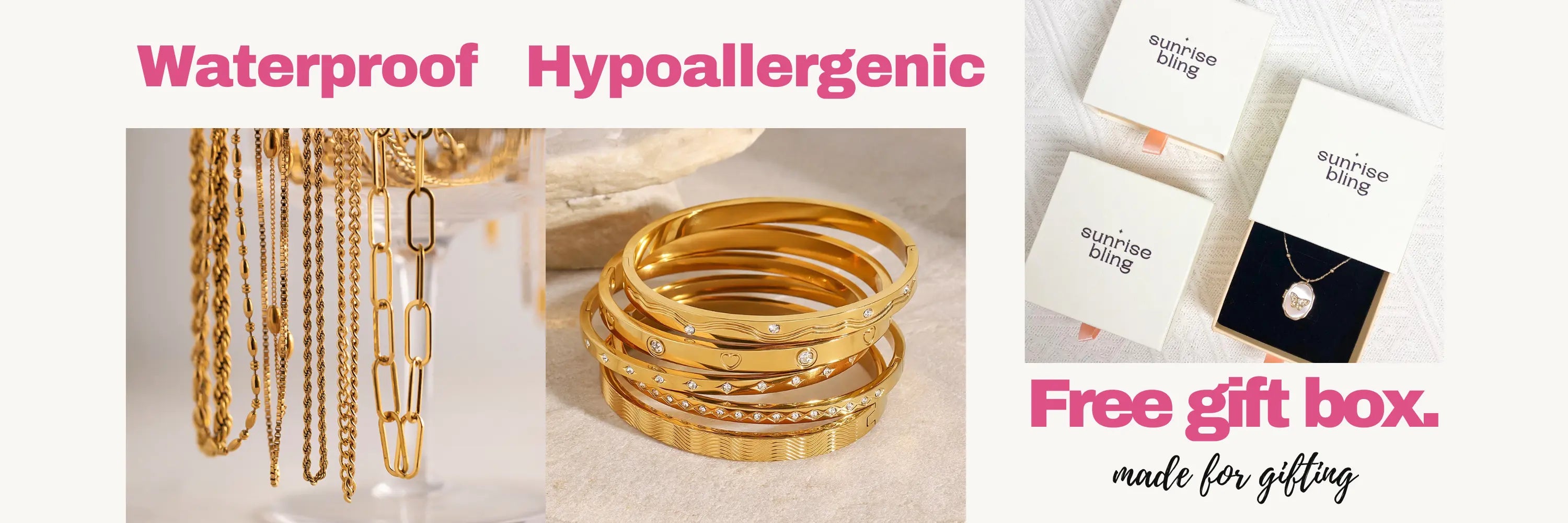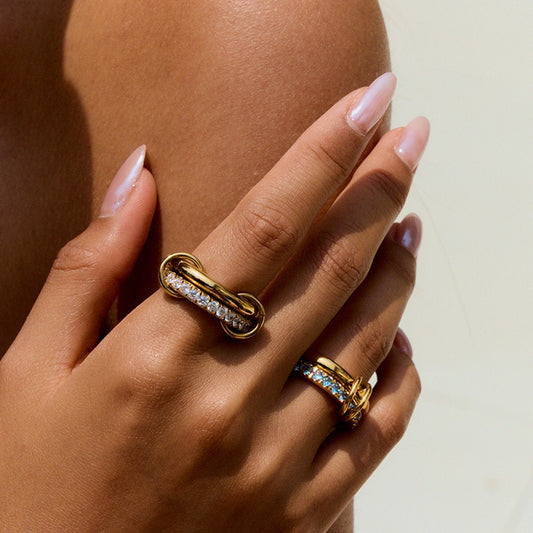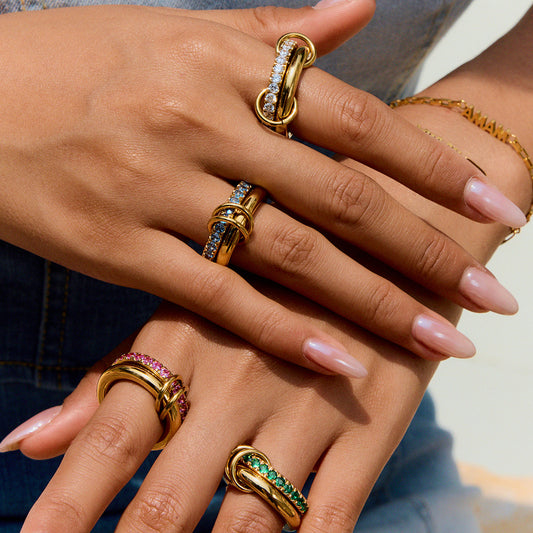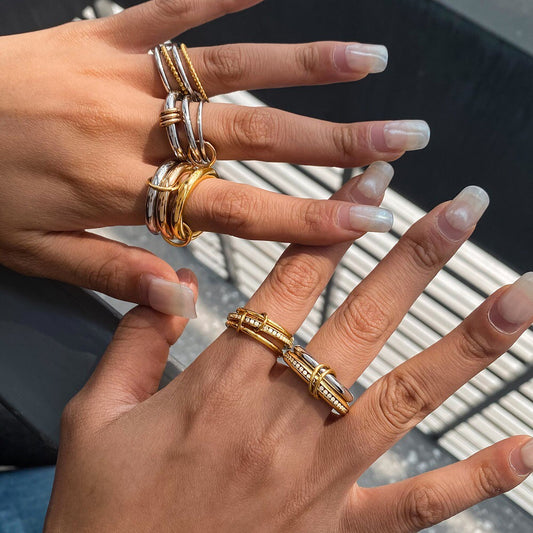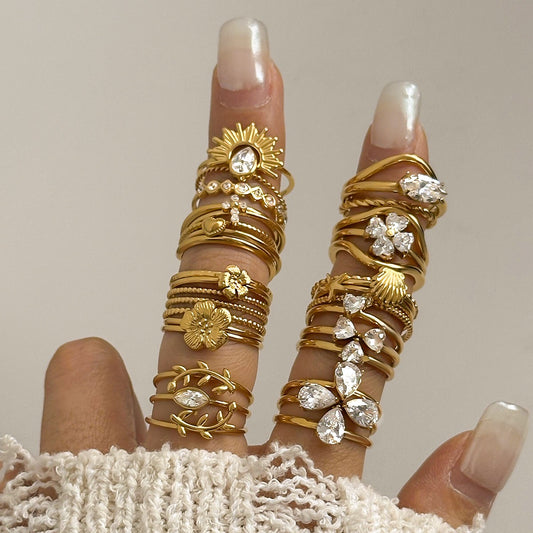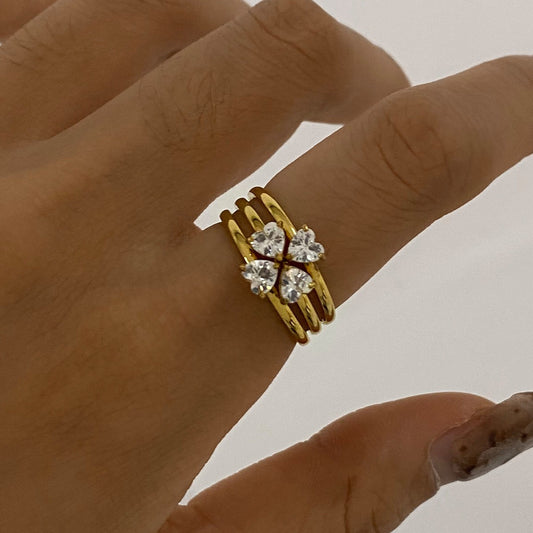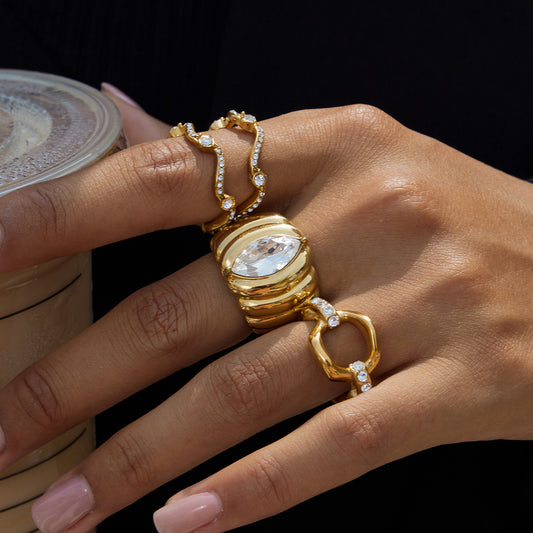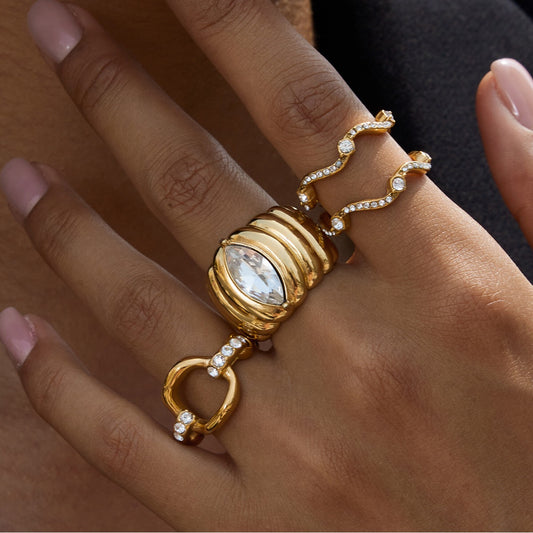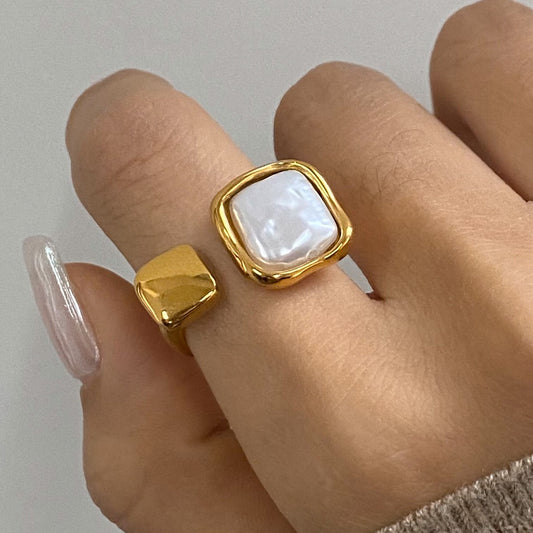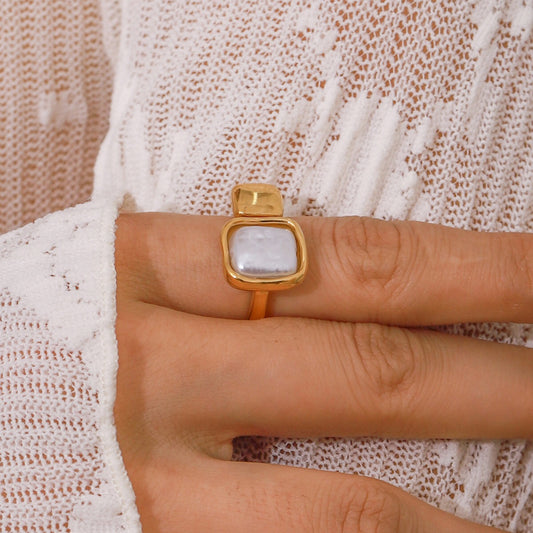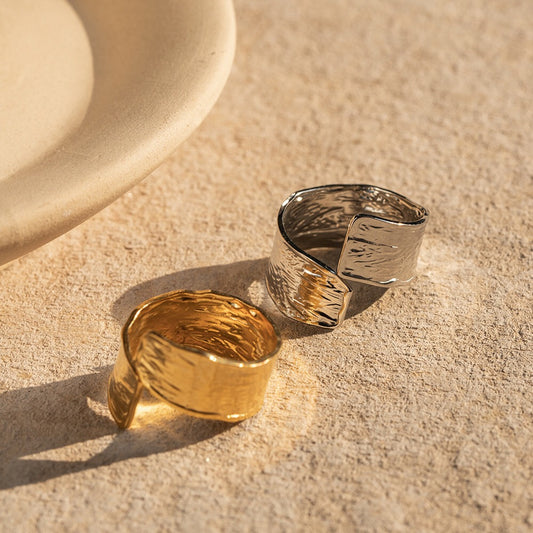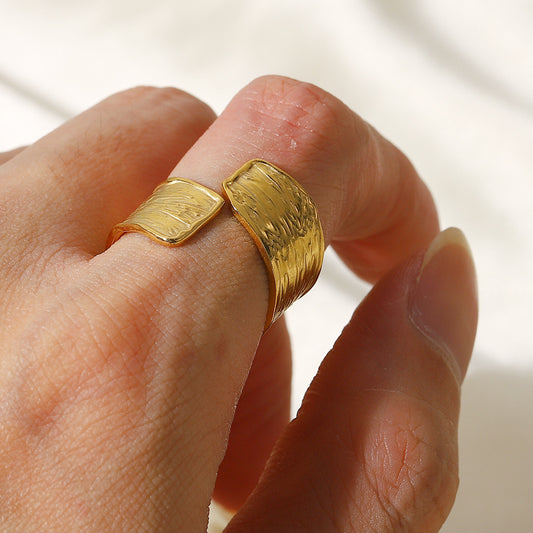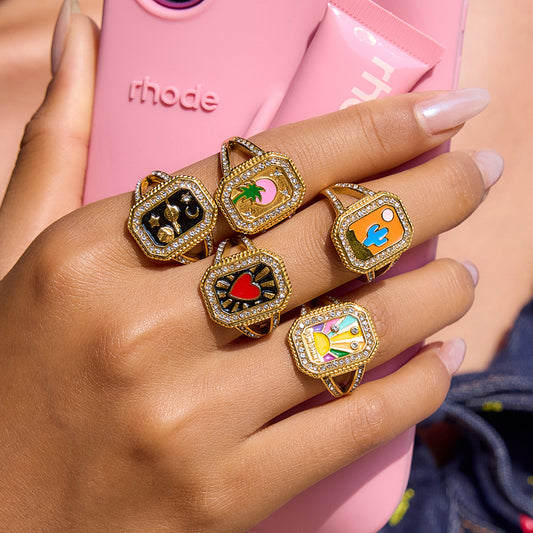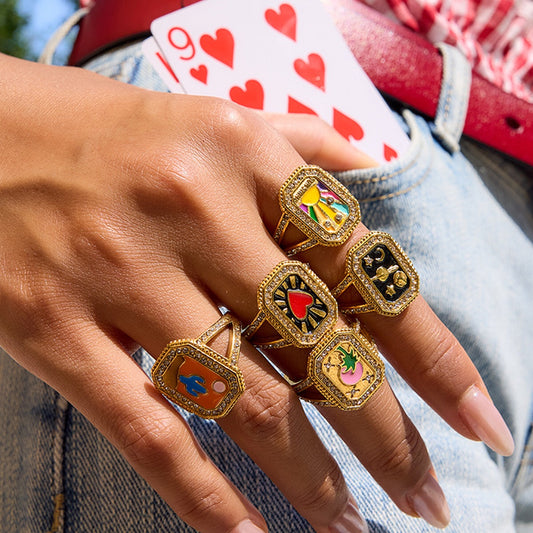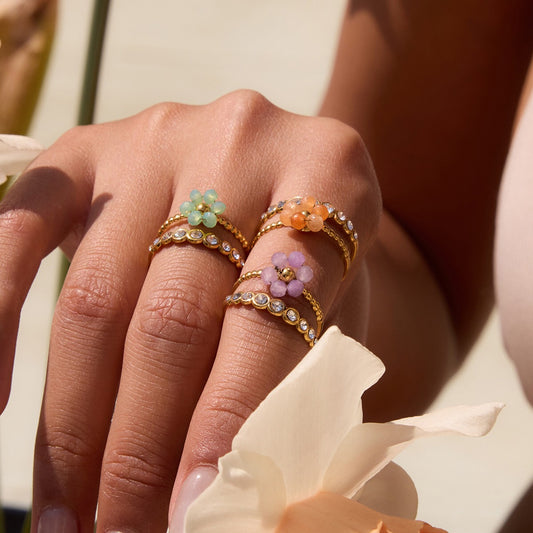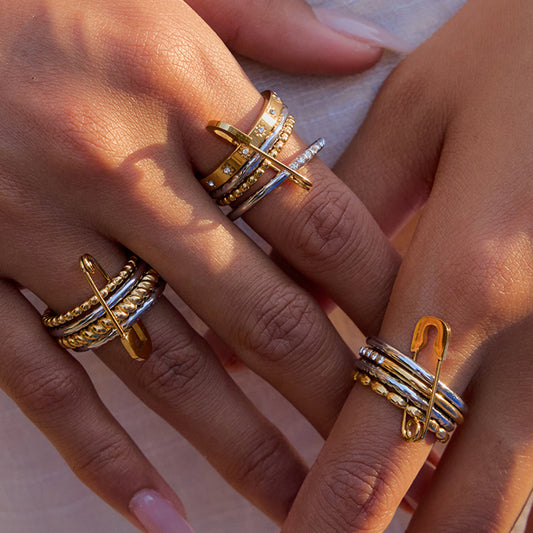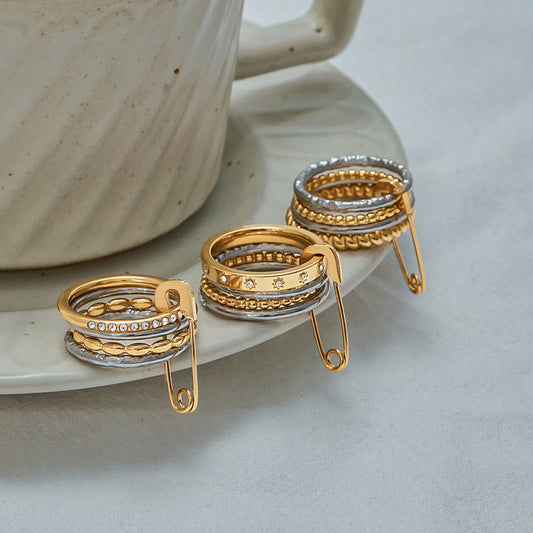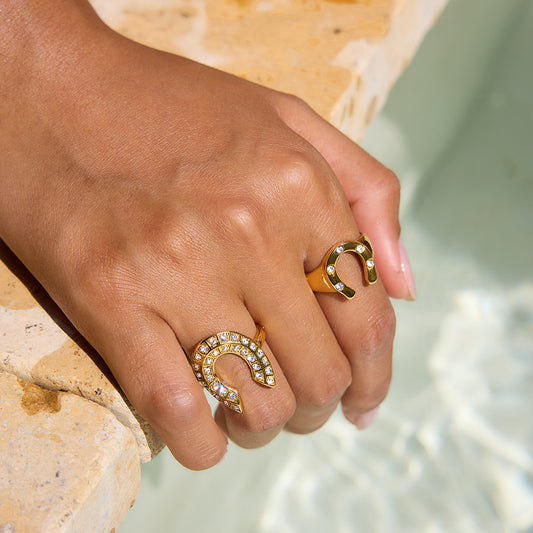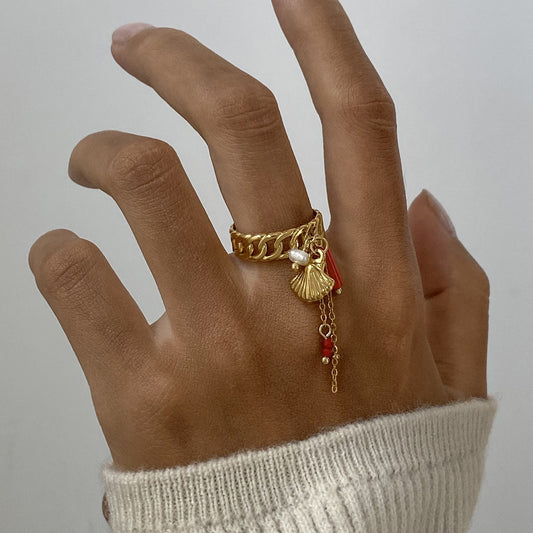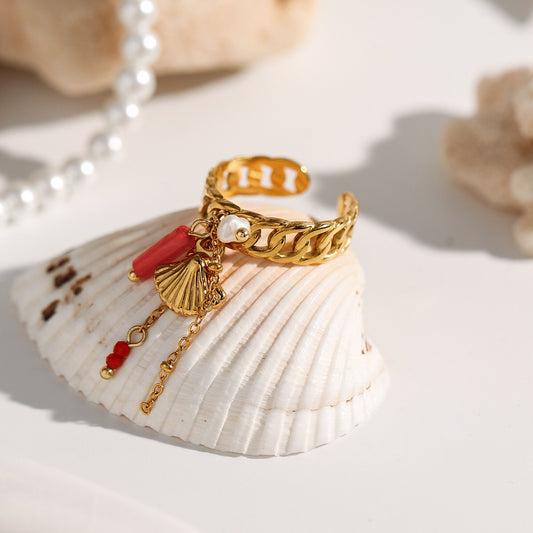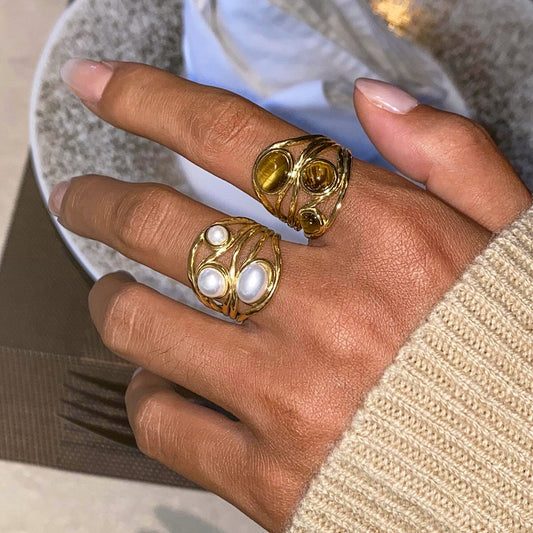Jade ring blend timeless natural beauty with deep cultural significance, making them a beloved accessory for anyone seeking elegance with meaning. Jade Jewelry Market size was valued at USD 2.5 Billion in 2024 and is projected to reach USD 4.0 Billion by 2033, exhibiting a CAGR of 5.5%. Unlike trend-driven gemstones, jade has been cherished for millennia (dating back to ancient Chinese, Mesoamerican, and Egyptian civilizations) for its symbolic associations with luck, tranquility, and longevity. Today, a jade ring isn’t just a piece of jewelry—it’s a wearable connection to heritage and a daily reminder of life’s quiet luxuries. This guide covers everything you need to know about jade rings, from their origins to how to care for and style them.

What Is a Jade Ring?
A jade ring is a piece of jewelry featuring jade (a naturally occurring gemstone) as the central element, set in a band of metal (often gold, silver, or platinum) or crafted entirely from carved jade. Jade itself is not a single stone but refers to two distinct minerals—jadeite and nephrite—both valued for their durability, rich colors, and cultural symbolism.
Jade rings range from minimalist designs (a small jade cabochon set in a thin band) to intricate carved pieces (jade sculpted into flowers, animals, or cultural motifs), but they all share a focus on highlighting jade’s unique natural beauty.
Key Characteristics of Jade Rings
-
Types of Jade: The two main varieties of jade used in rings differ in color, rarity, and value:
-
Jadeite: The rarer, more valuable variety—available in vibrant colors like emerald green (the most prized), lavender, white, yellow, and red. Green jadeite (often called “imperial jade”) is the most sought-after for rings, symbolizing vitality and prosperity.
-
Nephrite: More common and affordable than jadeite—typically found in soft greens, whites, or grays. Nephrite is slightly softer than jadeite but still durable, making it ideal for everyday-wear rings.
-
Jade Color & Quality: Jade’s value is determined by color, translucency, and clarity:
-
Color: For jadeite, intense, uniform green (free of spots or veins) is most valuable. For nephrite, soft, even green or white is preferred.
-
Translucency: High-quality jade is semi-transparent (light passes through it slightly) rather than opaque.
-
Clarity: Jade often has natural inclusions (veins, spots) that are part of its character—excessive inclusions or cracks lower its value.
-
Setting Styles: Jade rings use settings that protect the gemstone (jade is less hard than diamonds, so it needs gentle care) while showcasing its beauty:
-
Bezel Setting: A thin metal rim wraps around the jade cabochon, holding it securely in place. Ideal for everyday wear, as it prevents the jade from chipping.
-
Prong Setting: 3–4 small prongs hold the jade in place, exposing more of the stone to light. Best for higher-quality jade (to highlight its translucency) and occasional wear.
-
Carved Jade Bands: Entire rings crafted from a single piece of jade, carved into designs like twisted bands, floral patterns, or cultural symbols (e.g., Chinese dragons, lotus flowers). These are statement pieces, often passed down as heirlooms.
-
Metal Bands: The metal used to set jade complements its color and adds durability:
-
Gold (14k/18k): Enhances green jade’s warmth—yellow gold pairs beautifully with emerald green jade, while white gold complements lavender or white jade.
-
Silver/Sterling Silver: A more affordable option that brightens jade’s color—ideal for casual, everyday jade rings.
-
Platinum: A luxurious, hypoallergenic metal that pairs with any jade color—resistant to scratches, making it perfect for heirloom-quality rings.

How Jade Rings Differ from Other Gemstone Rings
-
Cultural Significance: Unlike diamonds (symbolizing love) or birthstones (symbolizing identity), jade carries deep cross-cultural meaning—luck, protection, and longevity—adding emotional weight to the ring.
-
Durability: Jade (both jadeite and nephrite) is durable enough for everyday wear (6.5–7 on the Mohs scale), but it’s not as hard as diamonds (10 on the Mohs scale), so it requires more careful handling.
-
Natural Beauty: Jade’s color and texture are organic—no two jade stones are identical, making each jade ring unique. Other gemstones (like sapphires or rubies) often have more uniform colors.
Why Is Jade Ring So Popular?
Jade rings have endured as a popular accessory for centuries because they offer a rare blend of beauty, meaning, and versatility. Their appeal spans generations and cultures, from those seeking cultural connection to those drawn to their understated luxury. Below are the key reasons for their enduring popularity:

Deep Cultural & Symbolic Meaning
Jade’s symbolism is universal, making it resonate with people across backgrounds:
-
Luck & Protection: In Chinese culture, jade is called “yu” and is believed to ward off negative energy, bring good fortune, and protect the wearer from harm. A jade ring is often gifted to mark milestones (birthdays, weddings) as a symbol of blessing.
-
Tranquility & Balance: In many Eastern cultures, jade is associated with calmness and harmony—wearing a jade ring is thought to reduce stress and promote inner peace, making it ideal for busy modern lifestyles.
-
Longevity & Heirloom Value: Jade is often called the “stone of eternity” because it doesn’t fade or deteriorate over time. Jade rings are frequently passed down through families, carrying stories and blessings from one generation to the next.
Timeless Aesthetic That Never Fades
Unlike trendy gemstones (e.g., lab-grown opals or colored sapphires) that feel dated after a few years, jade’s natural beauty is eternal. A green jade ring bought in 2024 will look just as elegant in 2054—its soft color complements every skin tone and outfit, from casual jeans to formal gowns. Whether paired with gold, silver, or worn as a carved band, jade’s understated elegance fits any style.
Durability for Everyday Wear
While jade isn’t as hard as diamonds, it’s still durable enough for daily use—nephrite and jadeite score 6.5–7 on the Mohs scale (harder than glass or most costume jewelry stones). With basic care (avoiding harsh chemicals, storing properly), a jade ring can last for decades, making it a practical investment for everyday luxury.

Sustainable & Ethical Appeal
Jade is a naturally occurring gemstone, and responsible miners (especially in regions like Myanmar, Canada, and Russia) follow ethical practices to extract it. Unlike some gemstones (e.g., diamonds with conflict risks), jade’s supply chain is more transparent, appealing to eco-conscious shoppers who want to wear jewelry with a clear conscience.
Versatility for Every Occasion
Jade rings adapt to any moment—they’re not just for special events:
-
Everyday Wear: A small jade cabochon set in a silver band adds a touch of grace to coffee runs or workdays.
-
Formal Events: A carved jade band or gold-set imperial jade ring complements evening gowns, adding cultural elegance to black-tie affairs.
-
Cultural Celebrations: Jade rings are often worn during Lunar New Year, weddings, or religious ceremonies as a symbol of tradition and blessing.
Popular Styles of Jade Ring
Jade rings come in a range of designs, from minimalist to ornate, ensuring there’s a style for every taste and occasion. Below are the most in-demand options:
Minimalist Jade Cabochon Rings (Everyday Essential)
These styles prioritize simplicity, letting jade’s natural beauty shine—perfect for daily wear:
-
14k Gold Green Jade Cabochon Ring (5mm): A small, smooth green jade cabochon set in a thin 14k yellow gold bezel. The warm gold enhances the jade’s emerald hue, making it versatile enough for work or casual outings.
-
Sterling Silver White Jade Ring: A white jade cabochon (symbolizing purity) set in a polished silver band. Understated and elegant, it pairs with any outfit—ideal for those who prefer neutral tones.
-
Rose Gold Lavender Jade Ring: A lavender jade cabochon (rare and unique) set in a delicate rose gold band. The soft purple and pink tones feel romantic, perfect for date nights or gifting.

Carved Jade Rings (Statement & Heirloom)
Carved jade rings are works of art, often featuring cultural or nature-inspired designs—ideal for special occasions or as heirlooms:
-
Chinese Dragon Carved Jade Band: A solid nephrite jade band carved with a traditional Chinese dragon (symbolizing power and luck). Crafted from a single piece of green jade, it’s a bold statement piece that honors Chinese heritage.
-
Lotus Flower Carved Jade Ring: A jade cabochon carved into a lotus flower (symbolizing purity and rebirth) set in a 14k gold band. The intricate detailing adds elegance, making it perfect for weddings or anniversaries.
-
Twisted Jade Band: A flexible band carved from white jade, twisted to mimic a braid. Smooth and comfortable, it’s a modern take on carved jade—great for stacking with other thin bands.
Jade & Diamond Accent Rings (Glamour & Luxury)
These styles combine jade’s natural beauty with diamond sparkle, perfect for those who love a touch of glamour:
-
14k Gold Green Jade & Diamond Ring: A central green jade cabochon flanked by two tiny diamonds (0.02ct each) in a gold band. The diamonds add subtle sparkle without overshadowing the jade—ideal for formal events.
-
Platinum White Jade & Diamond Halo Ring: A white jade cabochon surrounded by a halo of small diamonds, set in platinum. The platinum and diamonds brighten the jade’s white hue, creating a luxurious, timeless look.
Cultural-Inspired Jade Rings (Heritage & Meaning)
These styles draw from jade’s rich cultural history, making them meaningful for those who want to honor tradition:
-
Mesoamerican-Inspired Jade Ring: A jade cabochon set in a silver band with tiny engravings of Mayan or Aztec symbols (jade was sacred in Mesoamerican cultures). A unique way to connect to indigenous heritage.
-
Buddhist Om Carved Jade Ring: A small jade cabochon carved with the “Om” symbol (a sacred Buddhist mantra) set in a gold band. Symbolizes spiritual harmony, perfect for those with a spiritual practice.
How to Wear Jade Ring
Wearing a jade ring is about balancing its cultural significance with personal style—whether you’re wearing it alone or stacking it with other jewelry. Below are tips for different looks and occasions:
Styling for Casual Everyday Wear
-
Solo Minimalist Jade Ring: A small gold or silver jade cabochon ring on the ring finger pairs with jeans, a white t-shirt, and sneakers. Keep other jewelry minimal (small stud earrings, a thin necklace) to let the jade’s color stand out.
-
Stacked Jade & Metal Rings: Layer a thin jade cabochon ring with 1–2 plain metal bands (gold or silver) on the same finger. For example: a silver white jade ring + a thin gold band + a tiny silver stackable ring. The mix of textures adds interest without feeling cluttered.
-
Jade Ring & Bracelet Set: Pair a jade ring with a matching jade beaded bracelet. The coordinated set adds subtle elegance to casual outfits like sundresses or sweaters.
Styling for Work or Professional Settings
-
14k Gold Green Jade Ring: A small gold-set green jade ring on the middle finger complements a blazer, button-down shirt, and tailored trousers. It’s polished enough for meetings but subtle enough to avoid distraction.
-
Sterling Silver White Jade Ring: A white jade ring pairs with neutral workwear (beige, gray, navy). It adds a touch of grace to a professional look without being overly flashy.
-
Minimalist Jade Ring & Watch: Wear a jade cabochon ring on one wrist and a simple gold or silver watch on the other. The combination feels put-together and functional for busy workdays.
Styling for Formal Occasions
-
Carved Jade Band: A Chinese dragon or lotus carved jade band on the ring finger pairs with a floor-length gown (preferably in neutral colors like black, ivory, or gold). Let the ring be the focal point—skip other hand jewelry.
-
Jade & Diamond Ring: A gold-set green jade ring with diamond accents complements a cocktail dress. The diamonds catch light under formal lighting, while the jade adds cultural elegance.
-
Heirloom Jade Ring: If you have a family heirloom jade ring, wear it alone on the ring finger with a formal outfit. It’s a meaningful way to honor your heritage while looking glamorous.
Styling Tips for Different Hand Sizes
-
Small Hands/Fingers: Opt for a small jade cabochon (4–5mm) set in a thin band. Avoid large carved jade bands—they can overwhelm small hands.
-
Medium Hands/Fingers: Most jade ring styles work—try a medium-sized cabochon (5–6mm) or a delicate carved band. Stacking 1–2 thin rings with a jade ring adds balance.
-
Large Hands/Fingers: Choose a larger jade cabochon (6–7mm) or a bold carved jade band. The larger size complements bigger hands without feeling disproportionate.
Jade Ring: Perfect Gift for Your Mother
A jade ring is one of the most thoughtful gifts you can give your mother—it’s a symbol of love, gratitude, and well-wishes, tied to cultural traditions of honoring family. Unlike generic gifts, a jade ring carries deep meaning, reminding her of your care every time she wears it.
Why It Resonates as a Mother’s Gift
-
Symbolism of Love & Protection: Jade’s association with luck and protection makes it a heartfelt gift—you’re gifting her not just a ring, but a wish for her health, happiness, and safety.
-
Timelessness: A jade ring won’t go out of style—she’ll wear it for years, and it can even be passed down to future generations (a “grandmother’s ring” for your kids).
-
Personal Connection: Jade’s natural uniqueness means no two rings are the same—just like your mother. You can choose a style that reflects her personality (minimalist if she’s low-key, carved if she loves tradition).
Top Jade Ring Gifts for Your Mother
-
White Jade & Gold Ring: White jade symbolizes purity and calm—perfect for a mother who values peace. Set in 14k gold, it’s elegant enough for church, family gatherings, or everyday wear.
-
Heirloom-Quality Carved Jade Band: A small carved jade band (e.g., lotus flower or simple twist) set in platinum. Platinum’s durability ensures it lasts, making it a gift she can pass down.
-
Birthstone-Accented Jade Ring: A green jade cabochon paired with her birthstone (e.g., a tiny ruby for July) in a silver band. It’s personal and unique, showing you put thought into the details.
Tips for Choosing the Right Jade Ring for Your Mother
-
Consider Her Style: Notice if she wears delicate or bold jewelry—opt for a small cabochon if she’s minimalist, or a carved band if she loves statement pieces. Check her existing jewelry to see if she prefers gold, silver, or platinum.
-
Think About Her Cultural Background: If she has Chinese, Japanese, or Mesoamerican heritage, a carved jade ring with cultural motifs (dragons, lotus, Aztec symbols) will feel especially meaningful.
-
Get the Right Size: Use the “existing ring method” (measure one of her rings) or ask her partner for help. If you’re unsure, choose a ring with a slightly adjustable band (many jewelers offer free resizing).
How to Clean Jade Ring
Jade is a relatively soft gemstone, so cleaning it requires gentle care to avoid scratching or damaging the stone. The goal is to remove dirt and oils without harsh chemicals—follow these steps:
Daily Care to Prevent Buildup
-
Wipe After Wear: Use a soft, dry microfiber cloth to wipe the jade ring every night after removing it. This removes skin oils, lotion, and everyday dirt that can dull the jade’s shine.
-
Avoid Harsh Substances: Take off the jade ring before applying perfume, hairspray, hand sanitizer, or cleaning products. Chemicals like alcohol, ammonia, or bleach can damage jade’s surface and fade its color.
-
Store Properly: When not wearing the ring, place it in a soft jewelry pouch or a padded jewelry box. Avoid storing it with harder gemstones (like diamonds or sapphires) that can scratch the jade.
Step-by-Step Deep Cleaning Process
Deep clean your jade ring every 2–3 weeks to keep it looking its best:
-
Mix a Gentle Solution: In a small bowl, combine 1 cup lukewarm water with 1 drop of mild dish soap (like Dawn—avoid antibacterial or moisturizing soaps).
-
Dampen a Cloth: Dip a soft microfiber cloth into the solution—wring out excess water (the cloth should be slightly damp, not soaking).
-
Clean Gently: Wipe the jade stone and metal band with the damp cloth. For carved jade rings, use a soft-bristled toothbrush (designated for jewelry) to gently clean crevices—avoid scrubbing hard, as it can scratch the jade.
-
Rinse & Dry: Use a clean, damp cloth to wipe away soap residue. Pat the ring
dry immediately with a lint-free microfiber cloth—never air-dry, as water spots can form on the jade’s surface.
5. Polish (Optional): For extra shine, use a soft, dry cloth to gently buff the jade in circular motions. Avoid jewelry polish or abrasive cloths—they can scratch the stone’s surface and dull its natural luster.
What to Avoid When Cleaning Jade Rings
-
Ultrasonic Cleaners: These devices use high-frequency vibrations to clean jewelry, but they can damage jade (especially carved or thin pieces) by loosening inclusions or causing cracks. Stick to hand cleaning only.
-
Steam Cleaners: Steam can heat jade unevenly, leading to thermal shock and cracks—never use steam cleaners on jade rings.
-
Abrasive Materials: Toothpaste, baking soda, or scouring pads are too harsh for jade—they scratch the stone and remove its natural patina over time.
Are Jade Rings Fragile?
Jade rings are not overly fragile, but they require more careful handling than harder gemstones (like diamonds or sapphires). Their durability depends on the type of jade and how they’re crafted—here’s a breakdown to help you understand their strength:
Key Factors That Affect Fragility
-
Type of Jade:
-
Nephrite: Slightly less hard than jadeite (6.5–7 on the Mohs scale) but more 韧性 (toughness)—meaning it’s less likely to chip or crack when dropped. Nephrite jade rings are ideal for everyday wear, as they can withstand minor bumps.
-
Jadeite: Harder than nephrite (7 on the Mohs scale) but slightly less tough—prone to chipping if hit against hard surfaces (e.g., countertops, doorframes). Jadeite rings (especially those with thin edges or large cabochons) need more care.
-
Ring Design:
-
Bezel-Set Rings: The metal bezel acts as a protective barrier around the jade, reducing the risk of chipping. These are the least fragile jade ring style.
-
Prong-Set Rings: Prongs expose more of the jade to potential damage—if a prong bends or breaks, the jade can fall out or chip. These are more fragile than bezel-set rings.
-
Carved Jade Bands: Solid carved jade bands are durable (the jade is thick and sturdy), but intricate carvings (e.g., thin floral details) can be fragile—avoid twisting or bending the band.
How to Avoid Making Jade Rings Fragile
-
Remove During High-Risk Activities: Take off your jade ring before gardening, cooking (avoid hitting against pots/pans), weightlifting, or DIY projects—these activities increase the risk of impact or scratches.
-
Store Separately: Keep jade rings in a soft jewelry pouch or a divided jewelry box, away from harder gemstones (diamonds, sapphires) that can scratch the jade.
-
Avoid Extreme Temperatures: Jade can crack if exposed to sudden temperature changes (e.g., wearing it while washing dishes in hot water, then stepping outside in cold weather). Remove the ring before exposing it to extreme heat or cold.
In short: Jade rings are durable enough for everyday wear, but they’re not indestructible. With basic care, they’ll remain in great condition for decades.
Do Jade Rings Break Easily?
Jade rings do not break easily—in fact, jade is one of the toughest gemstones (thanks to its crystalline structure), making it resistant to breaking under normal wear. However, they can break or chip under specific circumstances—here’s what to watch out for:
When Jade Rings Might Break or Chip
-
Hard Impact: Dropping a jade ring on a hard surface (e.g., tile, concrete) or hitting it against a sharp object (e.g., a metal tool, a corner of a table) can cause chips or cracks—especially if the jade is thin or has pre-existing inclusions.
-
Extreme Pressure: Bending a carved jade band or squeezing a prong-set jade ring too hard (e.g., while opening a jar) can cause the jade to crack along its natural fracture lines.
-
Thermal Shock: As mentioned earlier, sudden temperature changes (e.g., moving from hot water to cold air) can cause jade to expand and contract rapidly, leading to cracks.
How to Prevent Jade Rings from Breaking
-
Handle with Care: Avoid rough handling—take off the ring when doing activities that involve impact or pressure.
-
Inspect Regularly: Check prong-set jade rings for loose prongs (if a prong is loose, the jade can shift and crack). For bezel-set rings, ensure the bezel is still secure (no gaps between the metal and jade).
-
Choose Durable Designs: Opt for bezel-set nephrite jade rings if you’re worried about breakage—they’re the most resistant to damage. Avoid thin jade cabochons (under 3mm) or intricate carvings if you have an active lifestyle.
Real-World Example: A nephrite jade bezel-set ring can withstand being dropped on a wooden floor without damage, but a thin jadeite prong-set ring may chip if dropped on concrete. With mindful wear, breakage is rare.
How Much Do Jade Rings Cost?
The cost of a jade ring varies widely—from under \(100 to over \)10,000—depending on four core factors: type of jade (jadeite vs. nephrite), jade quality (color, translucency, clarity), ring design (setting, metal), and brand/craftsmanship. Below is a detailed breakdown to help you budget:
Price Range by Type of Jade
-
Nephrite Jade Rings (Everyday Luxury):
-
Low-End (Basic Designs): Plain nephrite cabochon (small, opaque, light green) set in sterling silver. Prices: \(50–\)200.
-
Mid-Range (Quality Nephrite): Semi-transparent nephrite cabochon (medium green, few inclusions) set in 14k gold or high-quality silver. Prices: \(200–\)800.
-
High-End (Carved Nephrite): Intricately carved nephrite bands (e.g., lotus, dragon designs) set in 14k gold or platinum. Prices: \(800–\)3,000.
-
Jadeite Jade Rings (Luxury & Heirloom):
-
Low-End (Entry-Level Jadeite): Small, opaque jadeite cabochon (light green or lavender) set in silver. Prices: \(200–\)500.
-
Mid-Range (Quality Jadeite): Semi-transparent jadeite cabochon (medium green, few inclusions) set in 14k gold. Prices: \(500–\)5,000.
-
High-End (Imperial Jadeite): Transparent, intense emerald green jadeite (imperial jade) set in 18k gold or platinum, often with diamond accents. Prices: \(5,000–\)15,000+.
Additional Cost Factors
-
Setting Style: Bezel settings cost \(50–\)200 more than prong settings (more metal and labor). Carved jade bands cost 2–3x more than cabochon rings (intricate craftsmanship).
-
Metal Type: Sterling silver adds \(50–\)150 to the cost; 14k gold adds \(200–\)500; platinum adds \(500–\)1,000+.
-
Gemstone Accents: Diamonds or colored gemstones add \(100–\)2,000+ (depending on size and quality). A jade ring with 0.10ct diamonds will cost \(300–\)800 more than a plain jade ring.
-
Brand Premium: Luxury brands (e.g., Cartier, Tiffany & Co.) or artisanal jewelers charge 30–50% more for their name and craftsmanship. A Cartier nephrite jade ring may cost \(2,000–\)5,000, while a non-branded equivalent is \(800–\)2,000.
Example Price Breakdowns
-
Everyday Wear: Sterling silver bezel-set nephrite jade ring (light green, 5mm cabochon) → \(150–\)250.
-
Gift for Mother: 14k gold bezel-set nephrite jade ring (medium green, 6mm cabochon) → \(350–\)600.
-
Heirloom Piece: 18k gold prong-set jadeite jade ring (imperial green, 7mm cabochon) with diamond accents → \(8,000–\)12,000.
Frequently Asked Questions About Jade Rings
Q: How can I tell if a jade ring is real or fake?
A: Fake jade (often made of glass, plastic, or dyed stones) is common—use these simple tests to verify authenticity:
-
Visual Test: Real jade has natural inclusions (veins, spots) and uneven color—fake jade often has uniform color and no inclusions. Hold the ring up to light: real jade is semi-transparent (light passes through), while fake jade is opaque or too clear (like glass).
-
Sound Test: Tap the jade gently with a metal object (e.g., a spoon). Real jade makes a clear, ringing sound; fake jade makes a dull, thudding sound.
-
Temperature Test: Real jade feels cool to the touch even in warm weather—fake jade warms up quickly (like plastic or glass).
For certainty, ask for a certificate from a gemological lab (e.g., GIA) confirming the jade’s authenticity.
Q: Can I wear a jade ring every day?
A: Yes—nephrite jade rings are durable enough for daily wear, and jadeite jade rings can be worn daily with care. Follow these rules:
-
Remove the ring during high-risk activities (gardening, cooking, working out).
-
Clean it weekly with mild soap and water to remove buildup.
-
Store it safely at night to avoid damage while sleeping.
Many people wear their jade rings daily for years without issues—jade even develops a “patina” over time (a subtle glow from skin oils), making it more beautiful with wear.
Q: Does jade change color over time?
A: Real jade does not change color on its own—its color is stable and will remain the same for decades. However, fake jade (dyed stones) can fade over time, especially when exposed to sunlight, water, or skin oils.
If your jade ring looks darker or lighter than when you bought it, it’s likely due to dirt buildup (clean it!) or the stone being fake. Real jade’s color only improves with a patina (a soft glow), not a change in hue.
Q: Is jade a good choice for people with sensitive skin?
A: Yes—jade itself is hypoallergenic, so it won’t irritate sensitive skin. The only potential irritant is the metal band:
-
Choose sterling silver (nickel-free), 14k/18k gold, or platinum bands to avoid allergic reactions.
-
Avoid gold-plated or nickel-containing metals—they can cause redness, itching, or swelling in sensitive skin.
Test the ring by wearing it for 1–2 hours—if no irritation occurs, it’s safe for regular wear.
Q: Can jade rings be resized?
A: It depends on the design:
-
Bezel-Set or Prong-Set Rings: The metal band can be resized by a jeweler (cost: \(30–\)80), as long as the jade is not attached to the band’s resizing area.
-
Solid Carved Jade Bands: Cannot be resized—carved jade is a single piece, and cutting it would damage the design. If the band is too tight or loose, you’ll need to purchase a new one.
-
Adjustable Bands: Some jade rings have adjustable metal bands (e.g., open-back designs) that can be gently bent to fit—ideal if you’re unsure of your size.
Conclusion: Jade Ring—Everyday Luxury, Cultural Grace
A jade ring is more than a piece of jewelry—it’s a bridge between past and present, a symbol of luck and love, and a daily reminder of life’s quiet elegance. Whether you’re wearing a simple nephrite band for coffee runs, a carved jadeite ring for family gatherings, or gifting a gold-set jade ring to your mother, it carries meaning that transcends trends. Its durability, natural beauty, and cultural significance make it a timeless investment—one that can be worn for years and passed down to future generations.
Now that you know how to choose, care for, and style a jade ring, it’s time to find the perfect one to add to your collection. Browse our curated selection of jade rings—from everyday nephrite styles to luxury jadeite pieces—and use code JADEGRACE20 to get 20% off your first order. Whether you’re celebrating a milestone, honoring your heritage, or simply treating yourself to everyday luxury, a jade ring is the perfect choice. Shop now and let the grace of jade become a part of your daily story.


